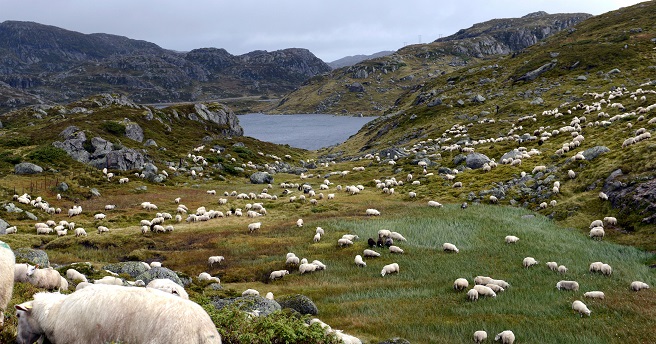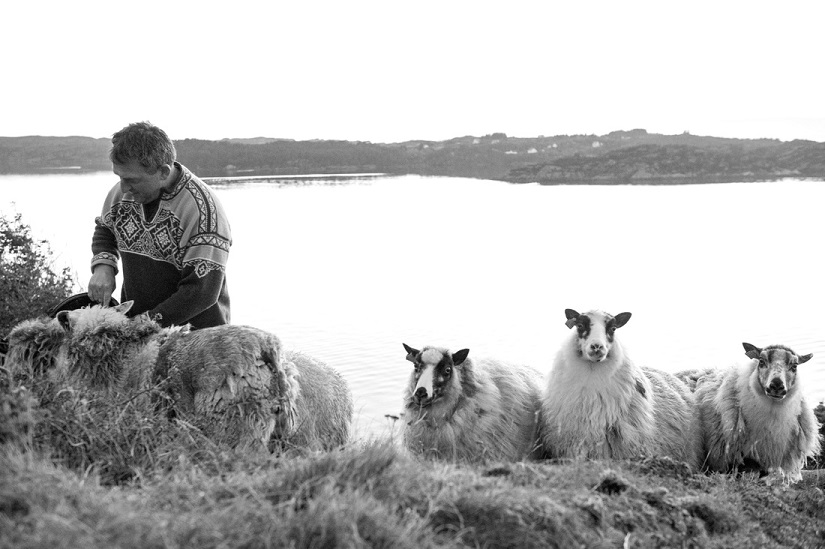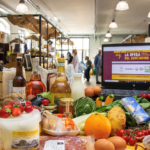
Approximately two million sheep are grazing in the outlying fields of Norway every summer. In the fall you can see rivers of sheep flowing down the mountainsides. In Norway, the resource situation is different than in the rest of Scandinavia and other comparable countries. Only three per cent of Norway’s landmass is arable land, but 45 per cent is usable or excellent grazing land. Another factor is that grazing sheep are preventing the landscape from overgrowing and maintains the biodiversity in Norwegian nature.
At the Farmers Market in Norway we have sheep farmers at all our markets. On the western coast, right outside Bergen, you can find the farmers from Strilalam. Strilalam consist of six farms, cooperating on slaughter, marketing and sale. The sheep lives along the coast on mainland and islands. In the autumn some of them are slaughtered. They have build a small slaughterhouse and also a place to refine the meat.
The farmers in Strilam have Norwegian white sheep, the most common breed in Norwegian agriculture, and they have wild sheep – the traditional old sheep breed. This kind of sheep has been in Norway for 5000 years. It’s smaller and is very well adapted to the landscape along the coastline. They can survive outside even in the cold winters.
Norwegian lamb is especially tender and juicy, due to the fact that most of the animals graze in outlying pastures, with vast expanses of untouched nature, clean running water, and protein-rich vegetation consisting of different herbs.
In addition, the lamb and sheep make an invaluable contribution to the Norwegian cultural landscape when grazing, as they keep the vegetation in check and thereby maintain natural diversity.
he Fenalår from Norway is now a geographically protected name for the slow-cured lamb’s leg, based on Norway’s long history of hanging mutton legs to dry in mountain air to preserve meat for use during the winter.
In autumn, the lamb stew fårikål (literally lamb-in-cabbage), is a very popular dish, while Pinnekjøtt, racks of lamb, or mutton cured in brine or sea salt, is popular during Christmas in Fjord Norway.
If you’re really lucky (and a bit courageous), you will get to taste a sheep’s head. The dish is called “smalahove” in Norwegian and is considered a delicacy in certain parts of the country.






